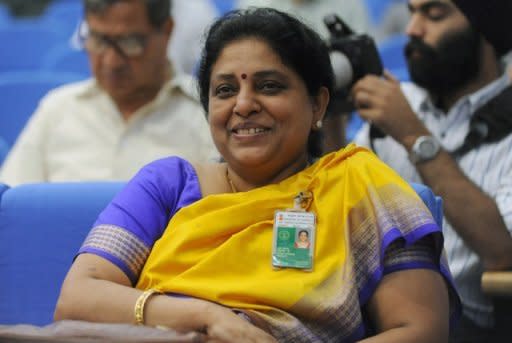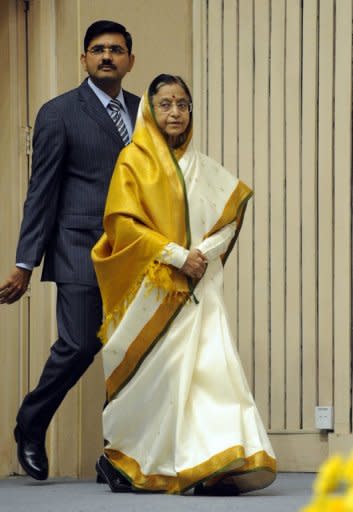The 'Missile Woman' behind Indian test launch
Hailed as a trail blazer in male-dominated India, Tessy Thomas juggles domestic duties with her day job -- as the country's top ballistic missile expert. Thomas was project director for the Agni V long-range nuclear-capable missile which was test-fired last week in a major military advance that will give India the ability to hit all of rival China's cities for the first time. Celebrated as "Missile Woman" in the local media, she has lent a new and unusual face to the secretive world of India's Defence Research and Development Organisation (DRDO). But while the Roman Catholic from southern Kerala state has changed perceptions of her profession and challenged tradition along the way, she says she remains the doting wife and mother at home. "In Indian culture, we feel that women are also supposed to be taking care of the home, so a little bit of challenges are there," the 48-year-old told AFP. "But all my lady colleagues are also doing the same, just like me. "It was slightly tough, but I could do it by balancing my time" between home and work. "It was tough when my son was in school," she conceded. Not all of her female colleagues have risen to such a position of prominence however. The Agni V was a prestige project for India. Its 5,000-kilometre (3,100 mile) range is seen as vital for national defence and another demonstration of the nation's rising power. President Pratibha Patil, another woman in a prominent position, commented after the launch that "the work of Thomas in the Agni programme would hopefully inspire more women in choosing careers in science". In January, Indian Prime Minister Manmohan Singh said that Thomas was an example of a "woman making her mark in a traditionally male bastion and decisively breaking the glass ceiling". Thomas joined the DRDO in 1988 and went on to work under A.P.J. Abdul Kalam, the architect of the national missile development programme who later became India's president. Her initial focus was on the guidance systems for the various Agni missiles. The first variant was flight-tested in 1989. Her stewardship of the Agni V came after the first launch of the 3,500-kilometre-range Agni III in 2006. The mother of a son and wife of a naval officer insists there is no gender discrimination in predominantly male DRDO, where about 200 female colleagues work in its dozens of ordnance factories and research facilities. "I always felt like a scientist and DRDO never made me feel otherwise. Besides, science does not recognise who is making the inputs," she said. Thomas says she decided to go into missiles -- which she regards as instruments of peace because of their deterrence value -- after watching rocket tests from a launch centre near her home. "As school children we used to go on picnics to watch the rocket tests and I would be fascinated. Besides, I was always interested in science and mathematics," she told AFP. Such is her passion for Indian defence hardware that she named her college-age son Tejas -- after India's indigenously-built light combat aircraft. Between her kitchen at home in the southern city of Hyderabad and poring over complex telemetry data at work, Thomas, who holds an engineering doctorate, has now set herself another challenge. "I am currently working on mission and guidance (systems) of the multiple independent re-entry vehicle," the scientist said, referring to proposed new technology to deliver multiple warheads with a single missile.




